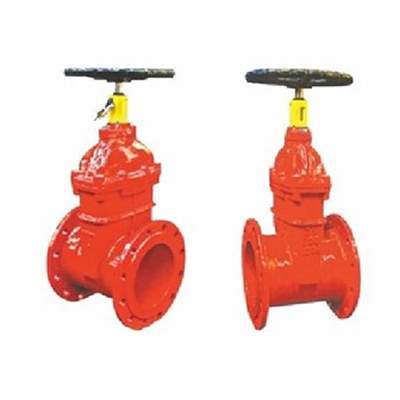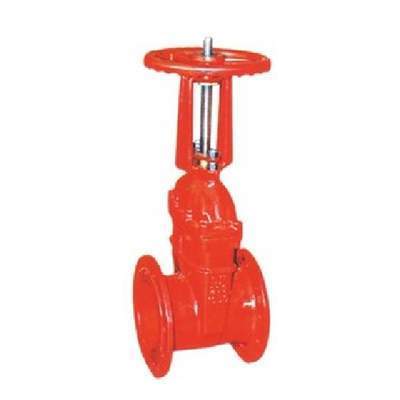Welcome to My Blog!
Before we dive into the content, if you’re interested in our products or have any questions, please feel free to visit our Contact Us page on the website. Our team is ready to assist you with inquiries, orders, or any support you may need.
Now, let’s get started on our journey together. I hope you find the content here insightful, engaging, and valuable.
Introduction

When designing or maintaining a fire suppression system, the right components make all the difference in ensuring its effectiveness during an emergency. Fire valves are a critical element of these systems, controlling the flow of water, foam, or other suppression agents to where they’re needed most. These valves are designed to perform specific functions, whether it’s allowing water to flow only in one direction, shutting off a water supply, or preventing overpressure in the system. Understanding the different types of fire valves and their roles will help you select the right one for your fire protection system.
In this article, we’ll explore the different types of fire valves used in suppression systems, what makes each one unique, and how to choose the right one for your setup. Whether you’re responsible for installing, maintaining, or upgrading a fire protection system, this guide will help you navigate your options and understand the importance of each valve.
What Are Fire Valves and How Do They Work?
Fire valves are specialized devices that regulate the flow of water, foam, or other fire suppression agents within a fire protection system. These valves ensure that the system operates efficiently during an emergency by controlling the flow and preventing backflow, pressure issues, and contamination.
Each type of fire valves serves a distinct purpose, but the overall goal is the same: to ensure the effective operation of the fire suppression system when every second counts. Fire valves can either be manually operated or automatically controlled by the system, depending on the type and function.
Gate Valves: The Backbone of Fire Protection Systems
Gate valves are often found in the main water supply lines of fire protection systems. These valves are manually operated and are typically used to completely stop or start the flow of water. A gate valve uses a sliding disc that lifts to allow flow or closes to stop it.
Why use gate valves in fire systems?
- Reliability: Gate valves provide a full and complete shutoff, ensuring no water leaks when they’re in the closed position.
- Durability: These valves are designed to withstand the pressures and environments of fire protection systems for long-term reliability.
However, gate valves need regular maintenance to prevent issues such as corrosion or debris buildup, which could cause them to seize over time.
Check Valves: Preventing Backflow
A check valve allows water or suppression agents to flow in one direction and automatically closes to prevent backflow. This is important for maintaining the integrity of the water supply and ensuring that contaminated water doesn’t re-enter the fire suppression system.
Why are check valves necessary?
- Prevent contamination: They ensure that the water used for fire suppression is not tainted by reverse flow from the system.
- Maintain pressure: Check valves help keep water pressure steady by preventing water from flowing back into the supply lines.
In many fire suppression systems, a check valve is essential to ensure that the system continues to operate correctly without the risk of contamination.
Ball Valves: Fast, Efficient Flow Control
Ball valves are known for their ability to control water flow quickly and efficiently. These valves use a ball with a hole through the center, which rotates to either allow or block the flow. When the ball’s hole is aligned with the pipe, water can flow through; when it’s rotated perpendicular, the valve shuts off the flow.
Benefits of ball valves:
- Quick operation: They open and close rapidly, making them ideal for situations where quick shutoff or flow control is necessary.
- Strong and durable: Ball valves are highly resistant to corrosion and wear, making them a great choice for fire suppression systems under pressure.
These valves are frequently used in applications where fast response times are essential, such as in industrial or commercial fire suppression systems.
Butterfly Valves: Compact and Versatile
Butterfly valves are designed with a rotating disc that opens and closes to regulate the flow of water or suppression agents. These valves are especially useful in situations where space is limited, as they take up less room than other types of valves.
Advantages of butterfly valves:
- Space-saving: Their compact design makes them a great option for tight spaces.
- Efficient operation: They can be operated quickly and with minimal effort, even in large-scale systems.
Butterfly valves are commonly used in larger fire protection systems where space is a concern, such as in commercial or industrial buildings.
Comparison of Fire Valves
| Valve Type | Primary Function | Best Use | Advantages |
|---|---|---|---|
| Gate Valve | On/off flow control | Main water supply shutoff | Reliable, full closure, simple design |
| Check Valve | Prevents backflow | Preventing contamination | Ensures water flow in one direction, pressure maintenance |
| Ball Valve | Quick flow control | Fast shutoff applications | Quick operation, durable |
| Butterfly Valve | Flow regulation | Large-scale installations | Space-saving, easy operation |
| Pressure Relief Valve | Releases excess pressure | High-pressure systems | Protects system components, prevents damage |
Pressure Relief Valves: Regulating Excess Pressure
In high-pressure fire suppression systems, pressure relief valves are crucial for protecting the system from damage caused by excessive pressure. These valves automatically open when the system reaches a pressure point that could cause damage, releasing the excess pressure.
Why are pressure relief valves important?
- Prevents damage: They protect pipes and other system components from the risk of failure due to overpressure.
- Maintains system balance: By ensuring that pressure doesn’t exceed safe limits, pressure relief valves help to keep the entire system functioning properly.
Without these valves, the fire suppression system could be at risk of bursting pipes or other failures under high pressure.
Alarm Check Valves: Adding an Extra Layer of Safety
Alarm check valves combine the functions of a standard check valve with an alarm system. These valves not only prevent backflow but also notify personnel when there is an issue, such as a pressure drop or a failure in the water supply.
Why are alarm check valves beneficial?
- Early detection: The alarm system provides immediate notice of any issues, allowing for quick maintenance or repairs.
- Ensures reliability: They help keep the fire suppression system in good working order by alerting maintenance teams to potential problems.
Alarm check valves are particularly important in systems that require high levels of reliability and monitoring.
Globe Valves: Fine Flow Control
Globe valves are designed to provide precise control over the flow of water. These valves feature a disc that moves up and down within the valve body to adjust the flow. Globe valves are ideal for applications where fine control of water flow is needed.
Key advantages of globe valves:
- Precise control: These valves allow for more accurate flow adjustments compared to other types.
- Reliable operation: Globe valves are durable and designed to last for many years, making them a solid choice for long-term fire suppression systems.
These valves are commonly used in systems that need fine-tuned control over water flow.
Valve Maintenance: Ensuring Long-Term Reliability

Proper maintenance of fire valves is essential to keep the fire suppression system functioning optimally. Over time, valves can become clogged with debris, suffer from corrosion, or experience wear and tear. Regular maintenance checks can help identify and fix these issues before they become serious problems.
Maintenance Tips:
- Inspect valves regularly for signs of wear or damage.
- Clean valves to prevent debris from affecting their operation.
- Test valve functionality to ensure that they open and close correctly.
Regular inspections and maintenance ensure that your fire valves perform as expected in an emergency.
Conclusion
Choosing the right fire valve is essential for the success of any fire suppression system. Each type of valve, whether it’s a gate valve, check valve, ball valve, or butterfly valve, plays a unique and critical role in ensuring that water or suppression agents flow exactly where they are needed during a fire. By understanding the different types of valves available and how they work, you can make informed decisions that improve the reliability and safety of your fire protection system.
Ensuring proper installation, regular maintenance, and timely repairs will maximize the lifespan and efficiency of your system, ultimately providing the best protection when it matters most.
FAQ
What are the most common types of fire valves used in fire suppression systems?
The most common types are gate valves, check valves, ball valves, butterfly valves, and pressure relief valves. Each type serves a specific function in the system.
How often should fire valves be inspected?
Fire valves should be inspected at least annually, with more frequent checks if the system is exposed to harsh conditions or high usage.
Can fire valves fail?
Yes, like any mechanical component, fire valves can fail due to wear, corrosion, or debris buildup. Regular maintenance is essential to prevent failures during an emergency.
